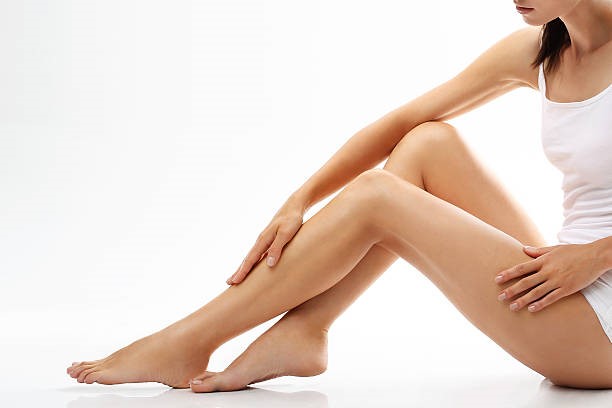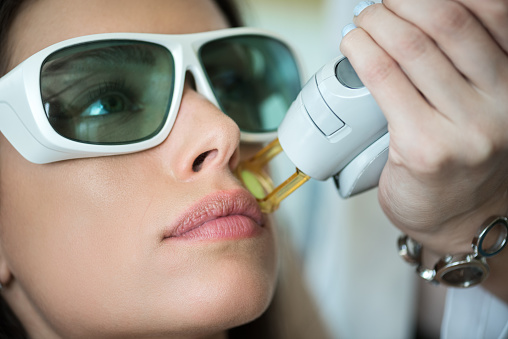
How to use laser hair removal technique for eliminating facial hair?
Have you eliminated your body hair with the laser beam technique and are satisfied with the results? Are you looking for other areas where you may use the same? Well, for the record – the removal of facial hair with laser heat technology is the new craze! With most of the fashion influencers promising tremendous results only in a single sitting – it is time to delve into the truth and myths of this new beauty regime.
This article will give you insight into using laser heat technology for removing facial hair, its benefits, and the aftercare and inform you of the minimal risks and side effects associated with this.
Let’s get to the bottom of this fad.

How to remove facial hair with laser technology?
Since you have tried the laser hair technique for your body hair, you do have a rough idea about – how the laser beams categorically target the hair follicles of a specific area and control their growth. When you are looking out for a facial laser hair removal process, the process is similar.
Before we get to the steps of facial hair removal with laser beams, you must note that the skin has to be prepared well in – advance. Ensure that you do not wax or even pluck the area 6 weeks prior to the treatment. Also, steer clear of the sun a week before the commencement of this process. If necessary, use sun protection or other creams to keep your skin hydrated.
Here’s how the skin is prepped –
Step 1 – The selected area is cleansed, especially of oil components and accumulated dirt. All the metallic jewelry is removed.
Step 2 – The technician may shave or trim the hair before kickstarting the process. Then he or she will apply a gel that assists in the penetration of the laser beams directly at the hair follicles.
Step 3 – This is the crucial step wherein you have to choose the type of laser. For the record – there are 3 types of laser beams – ND Yag (dark skin), Ruby (fair skin), and Alexandrite (olive skin). The technician will match your skin tone, experiment with a single pulsating beam to see the side effects, and then go ahead with the process.
Step 4 – Before the final process, your eyes will be covered, and a basic anesthetic will be applied to ease the pain associated with this process.
Which are the most common areas?
The most common areas on your face that may require this technology are – sideburns, chin, upper lip, and neck areas. For men, however – their neckline and the back of their neck are the key areas considered for facial hair removal.

Why choose laser technology for this?
For someone who has been waxing or shaving their facial hair, they might have doubts about using it for facial hair, despite using the laser removal technique on their body. The face has sensitive skin, and therefore one is bound to get scared when considering any such technique.
However, that in no way negates the benefits associated with this technique.
Let’s check here some of the key reasons for choosing facial hair removal by this technique –
- A drastic reduction in facial hair growth, with long-lasting effects. Mostly, single-sitting does the job for facial hair. But if you have hormonal imbalance – you might require 2-3 sittings, but with guaranteed results.
- Without a doubt, it is one of the most affordable and time-saving techniques when compared to the overall costs and benefits associated with shaving or waxing.
- The laser hair elimination technique categorically targets the concerned area and leaves the surrounding skin unaffected.
Clearly, with these benefits in tow – you might seriously start thinking of opting for this technique.

How to take care of the skin after the process?
Technically speaking, there is no ‘aftercare’ associated with this beauty technique. In fact, most people can go back to work after their sessions. If, at all, you have some irritation – you may use ice packs or aloe vera gel to calm your skin. The clinics prescribe topical antibiotics and steroid creams to alleviate the immediate pain. As a safeguard – you must use sunscreen while going out after this procedure.
In case the irritation persists or you face skin-blistering – immediately consult the professionals associated with the laser hair elimination process. They will be able to detect the problem and assist you accordingly.
What are the risks associated with it?
For the record – there are no massive risks associated with the facial laser hair removal technique. The most common side – effects include –
- Sudden skin darkening or uneven skin tone.
- Swelling, redness, and pain in the area from where hair was removed
- Sudden spurts of irritation on the skin
- In rare cases – you might have scarring of the skin or blistering. If you do not use proper eye gear (most clinics provide one), you may have eye problems.
However, most of these conditions are treatable and do not pose any massive risk.

Choosing the service provider is important
Understanding that you are confident about this process, the last thing you will have to check is – picking the correct service provider.
- Check the practitioner’s credentials. They must be certified by the FDA and the US Medical Board.
- They must have a minimum of 5 years of practice. You may go in for novices, but ensure that they are associated with clinics that have a 10-year-old business license. Since this is a medical procedure, you must be very cautious.
- Lastly, do go in for a preliminary check-up at the concerned clinic. From the equipment to the license to the techniques that will be used on you – as a patient, you must be aware of the same.
Summing up
Unlike what you may have thought about facial laser hair removal being another of those Insta fads, you now know for yourself its benefits. Hence, if you too intend to try this out, or even go for a complete body laser hair removal – ensure that you find out a registered professional or a noted clinic and then opt for this procedure. It is always better to be safe than sorry!







